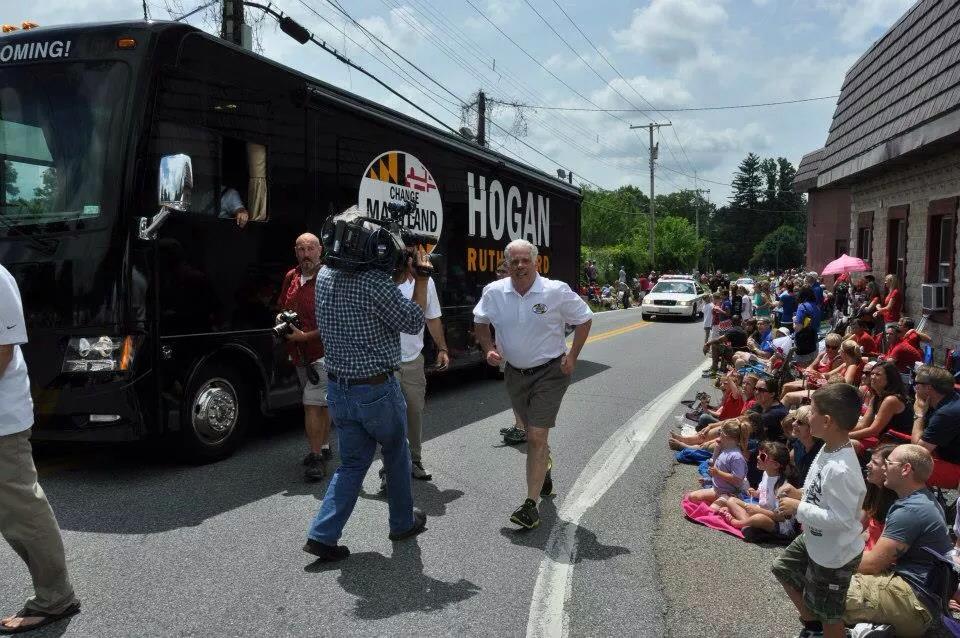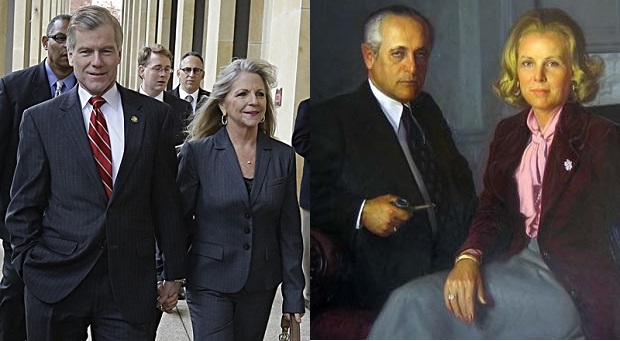 This guide by former Transportation Secretary Bob Flanagan accompanies the article “Transportation scoring bill sends officials on wild goose chase.” It shows how HB1013 compares transportation projects by scores — 100 points are allocated to each section, with 900 points maximum per project.
This guide by former Transportation Secretary Bob Flanagan accompanies the article “Transportation scoring bill sends officials on wild goose chase.” It shows how HB1013 compares transportation projects by scores — 100 points are allocated to each section, with 900 points maximum per project.
The copy in capitals is the wording of the bill. The copy in italics below it is Flanagan’s analysis.
Gov. Larry Hogan vetoed HB1013, Maryland Open Transportation Investment Decision Act of 2016, last Friday. The House will attempt to override the veto Thursday. It passed both houses just shy of the supermajorities needed to override a veto.
(I) FOR SAFETY AND SECURITY (100 pts):
- THE EXPECTED REDUCTION IN TOTAL FATALITIES AND SEVERE INJURIES IN ALL MODES AFFECTED BY THE PROJECT
- No argument with this goal
- THE EXTENT TO WHICH THE PROJECT IMPLEMENTS THE MARYLAND STATE HIGHWAY ADMINISTRATION’S COMPLETE STREETS POLICIES (click here)
- This goal is not directly related to safety and should be moved to a different category
- Duplicative, already addressed in Section V
- This is intended to heavily promote transit, bicycling, and pedestrian traffic
(II) FOR SYSTEM PRESERVATION (100pts):
-
- THE DEGREE TO WHICH THE PROJECT INCREASES THE LIFESPAN OF THE AFFECTED FACILITY
- No argument with this goal
- THE DEGREE TO WHICH THE PROJECT INCREASES THE FUNCTIONALITY OF THE FACILITY
- This goal is vague, it isn’t clear what is being measured to increase functionality
- THE DEGREE TO WHICH THE PROJECT RENDERS THE FACILITY MORE RESILIENT
- Resiliency in this instance refers to protection from the effects of climate change
- It is unclear what would be measured in most instances
- THE DEGREE TO WHICH THE PROJECT INCREASES THE LIFESPAN OF THE AFFECTED FACILITY
-
(III) FOR QUALITY OF SERVICE (100pts):
- THE EXPECTED CHANGE IN CUMULATIVE JOB ACCESSIBILITY WITHIN AN APPROXIMATELY 60=MINUTE COMMUTE FOR HIGHWAY PROJECTS OR TRANSIT PROJECTS
- The 60 minute commute criteria means that commuters whose travel time is over an hour and cannot be reasonably reduced will be ignored.
- No points/reduced points to transit and highway projects that help commuters with travel time over 60 minutes.
- This disadvantages many Marylanders who cannot find jobs closer to their homes or afford homes in good communities near their jobs.
- This injustice occurs in two other sections of the bill. See Sec (VI)(1) & (VII)(1)
- THE DEGREE TO WHICH THE PROJECT HAS A POSITIVE IMPACT ON TRAVEL TIME RELIABILITY
- No argument with this goal
- THE DEGREE TO WHICH THE PROJECT SUPPORTS CONNECTIONS BETWEEN DIFFERENT MODES OF TRANSPORTATION AND PROMOTES MULTIPLE TRANSPORTATION CHOICES
- Since 92% of trips are taken by personal vehicles, the references to ‘different modes of transportation’ and ‘multiple transportation choices’, can only refer to transit.
(IV) FOR ENVIRONMENTAL STEWARDSHIP (100pts):
- THE POTENTIAL OF THE PROJECT TO LIMIT OR REDUCE HARMFUL EMISSIONS
- These points can only go to transit projects
- THE DEGREE TO WHICH THE PROJECT AVOIDS IMPACTS ON STATE RESOURCES IN THE PROJECT AREA AND ADJACENT AREAS
- ‘State Resources’ is ambiguous but appears to refer to environmental, historic, & cultural resources.
- These points are likely to go to transit
- THE DEGREE TO WHICH THE PROJECT ADVANCES THE STATE ENVIRONMENTAL GOALS
- These goals are related to Smart Growth and essentially getting people out of automobiles.
- These points can only go to transit projects.
-
(V) FOR COMMUNITY VITALITY (100pts):
- THE DEGREE TO WHICH THE PROJECT IS PROJECTED TO INCREASE THE USE OF WALKING, BIKING, AND TRANSIT
- These points can only go to transit projects
- This goal is duplicative (See Section I-2)
- THE DEGREE TO WHICH THE PROJECT ENHANCES EXISTING COMMUNITY ASSETS
- ‘Existing Community Assets’ appears to be a reference to Smart Growth. No points can be given to highway projects intended to move people from point A to point B. These points are likely to go to transit.
- THE DEGREE TO WHICH THE PROJECT FURTHERS THE AFFECTED COMMUNITY’S AND STATE’S PLANS FOR REVITALIZATION
- ‘Revitalization’ usually refers to urban or high density population centers. Transportation plans for revitalizing these areas are much more likely to be related to transit; points likely to go to transit.
- THE DEGREE TO WHICH THE PROJECT IS PROJECTED TO INCREASE THE USE OF WALKING, BIKING, AND TRANSIT
-
(VI) FOR ECONOMIC PROSPERITY (100pts):
- THE EXPECTED CHANGE IN CUMULATIVE JOB ACCESSIBILITY WITHIN AN APPROXIMATELY 60 MINUTE FOR HIGHWAY PROJECTS OR TRANSIT PROJECTS
- The 60-minute commute criteria means that commuters whose travel time is over an hour and cannot be reasonably reduced will be ignored.
- Again, no points/reduced points to transit and highway projects that help commuters with travel time over 60 minutes.
- This disadvantages many Marylanders who cannot find jobs closer to their homes or afford homes in good communities near their jobs.
- This injustice occurs in two other parts of the bill, see Sections (III)(1) & (VII)(1)
- THE EXTENT TO WHICH THE PROJECT IS PROJECTED TO ENHANCE ACCESS TO CRITICAL INTERMODAL LOCATIONS FOR THE MOVEMENT OF GOODS AND SERVICES
- Unclear as to what specifically is a ‘critical intermodal location’ for movement of ‘services’
- THE PROJECTED INCREASE IN FURTHERING NONSPECULATIVE LOCAL AND STATE ECONOMIC DEVELOPMENT STRATEGIES IN EXISTING COMMUNITIES
- These points only go to projects with economic development in existing communities
- No points awarded for projects supporting economic development outside of existing communities, e.g. Konterra in Laurel or Western Maryland
- THE EXPECTED CHANGE IN CUMULATIVE JOB ACCESSIBILITY WITHIN AN APPROXIMATELY 60 MINUTE FOR HIGHWAY PROJECTS OR TRANSIT PROJECTS
-
(VII) FOR EQUITABLE ACCESS TO TRANSPORTATION (100pts):
- THE EXPECTED INCREASE IN JOB ACCESSIBILITY FOR DISADVANTAGED POPULATIONS WITHIN AN APPROXIMATELY 60–MINUTE COMMUTE FOR PROJECTS
- The 60-minute commute criteria means that commuters whose travel time is over an hour and cannot be reasonably reduced will be ignored.
- No points/reduced points to transit and highway projects that help commuters with travel time over 60 minutes.
- This disadvantages many Marylanders who cannot find jobs closer to their homes or afford homes in good communities near their jobs.
- This injustice to disadvantaged persons occurs in two other sections of the bill. See Sections (III)(1) & (VI)(1)
- THE PROJECTED ECONOMIC DEVELOPMENT IMPACT ON LOW–INCOME COMMUNITIES
- This refers to urban/densely populated areas
- Transportation plans for these areas are much more likely to be related to transit
- No points/reduced points for economic development outside of urban/densely populated areas near low income communities (Lower Shore, Western Maryland)
- THE EXPECTED INCREASE IN JOB ACCESSIBILITY FOR DISADVANTAGED POPULATIONS WITHIN AN APPROXIMATELY 60–MINUTE COMMUTE FOR PROJECTS
-
(VIII) FOR COST EFFECTIVENESS AND RETURN ON INVESTMENT (100pts):
- THE ESTIMATED TRAVEL TIME SAVINGS DIVIDED BY THE PROJECT COST
- Project cost is only weighted against points attributed to estimated travel time savings. Otherwise, a project does not lose points because it is too extravagant or too costly. Overall, other than this single incidence, the cost of a project is irrelevant to its score.
- Compare this to what was enacted in Virginia’s transportation scoring bill (See attached VA HB2, 2014), which required all factors to be considered “relative to the cost of the project”. The Virginia regulations take the cumulative points of each project and divides by the cost.
- THE DEGREE TO WHICH THE PROJECT LEVERAGES ADDITIONAL FEDERAL, STATE, LOCAL, AND PRIVATE SECTOR TRANSPORTATION INVESTMENT
- Federal Highway Funds are set by formulas enacted by Congress, additional funds are rarely, if ever leveraged for an individual highway project.
- For example, it took a great deal of effort for Gov. Bob Ehrlich to secure federal funds for the ICC.
- Transit projects, by contrast, leverage federal funds under the “New Starts” program.
- Leveraging of local funds for transit and highway projects occurs on a case by case basis.
- There is private sector investment in the Purple Line, based on the fact that there is an income stream generated by fares. Private sector investment is not likely to occur in SHA projects.
- Note: Maryland Transportation Authority projects (which are funded by tolls) are not covered in this bill.
- 3. THE DEGREE TO WHICH THE PROJECT WILL INCREASE TRANSPORTATION ALTERNATIVES AND REDUNDANCY
- Any increase in transportation alternatives and redundancy is totally unrelated to cost effectiveness and return on investment.
- ‘Alternatives’ appears to refer to transit, due to the fact that 92% of trips are made by automobile.
- Federal Highway Funds are set by formulas enacted by Congress, additional funds are rarely, if ever leveraged for an individual highway project.
- THE ESTIMATED TRAVEL TIME SAVINGS DIVIDED BY THE PROJECT COST
-
(IX) FOR LOCAL PRIORITIES AND PLANNING, THE DEGREE TO WHICH THE PROJECT SUPPORTS LOCAL GOVERNMENT LAND USE PLANS AND GOALS (100pts):
- To the extent that this refers to the traditional CTP Tour and priority letter process, a max of 100/900 points is not sufficient. In the past, county priorities have been jointly developed by MDOT and local government planners. As such, local priorities have been decisive.
- THE DEPARTMENT SHALL MULTIPLY THE TOTAL COMBINED SCORE OF EACH MAJOR TRANSPORTATION PROJECT BY A WEIGHTING FACTOR EQUAL TO ONE PLUS THE RESULTS OF DIVIDING THE POPULATION IN THE AREA SERVED BY THE PROJECT, AS DETERMINED IN REGULATIONS ADOPTED BY THE DEPARTMENT, BY THE POPULATION OF MARYLAND.
The use of this weighting factor is biased in favor of transit. As the population “in the area served” increases, the score will be multiplied by a larger number. Actual usage of a facility is not relevant. A transit project in a dense population area will receive a higher score, even if 20% of the population takes transit and 80% travels by automobile.
Summary of What This Scoring System Does & Does Not Do
- The scoring system is built on the ideology of 1000 Friends of Maryland. It relies on neglecting highway needs in order to benefit transit, on the theory that this will reduce congestion on roadways. This is an unproven and factually unsupported goal.
- For example, the advocates for the Purple Line were forced to admit that traffic would not be alleviated on the Washington Beltway after the project was completed.
- The scoring system does not adequately weigh the traditional function of roads and highways that carry people from point A to point B.
- The scoring system attributes no points for congestion relief.
- The scoring system neglects the need to improve traffic flow in vital commuter corridors and eliminate bottlenecks.
- The scoring system rewards projects that support: Walking, biking, revitalization, complete streets and smart growth policies, equitable access to transportation, and environmental lobby priorities.
- The scoring system is hostile to commuters who must travel in excess of 60 minutes to get to their place of employment.
- The scoring system favors some areas of the state over others
- The scoring system does nothing to guarantee a balance between transit and highways.
- The scoring system is generally insensitive to whether a project is too expensive and/or extravagant. A ‘gold plated’ transit project will score higher and not be discounted for being too costly. See (VIII)(1)(a).
- The scoring system does not have a strategy for promoting mobility; it does not recognize the need or encourage its development. Instead the scoring system would irrationally obstruct a strategy for managing congestion/promoting mobility. Projects like the Route 32 widening and Route 29 widening have a demonstrable transportation strategy. 1,000 friends of Maryland strongly opposed both of these projects.
- The scoring system does not acknowledge that needs are different in different parts of the state, for example, congestion relief in the I-270 corridor versus economic development in rural Maryland.
- The scoring system does not allow more than 100 points for saving lives as in, for example, dualization of Route 404 in Caroline County on the way to the beach.
- The scoring system forces a life-saving project like the one on Route 404, which could barely score more than 100 points, to compete with a gold-plate billion dollar transit project in Montgomery County, which could score over 700 or 800 points.
- The only safety projects that avoid running this scoring gauntlet, are those which do not increase capacity. This exclusion is relatively insignificant however, since dangers on the highway are highly correlated with congestion and as such, can only be solved by increasing capacity and improving traffic flow.
- Between now and the end of the current term, the advantage in scoring will go to jurisdictions that have already identified billions of dollars in gold-plated transit projects, such as Montgomery County’s three Bus Rapid Transit lines and Baltimore City’s light rail lines.






Recent Comments